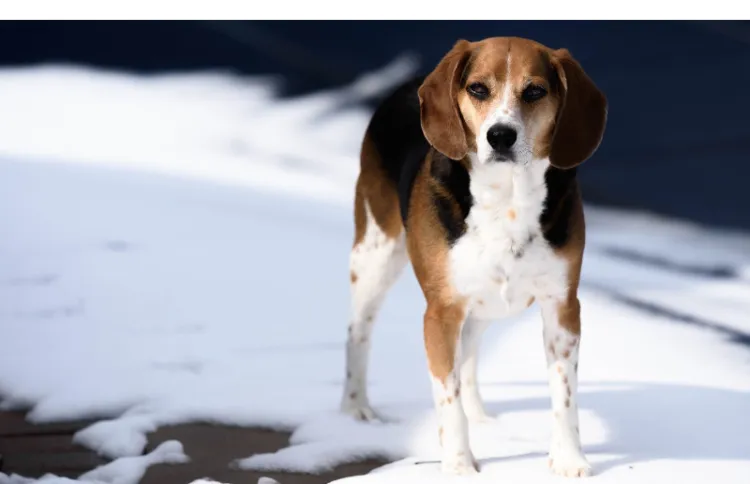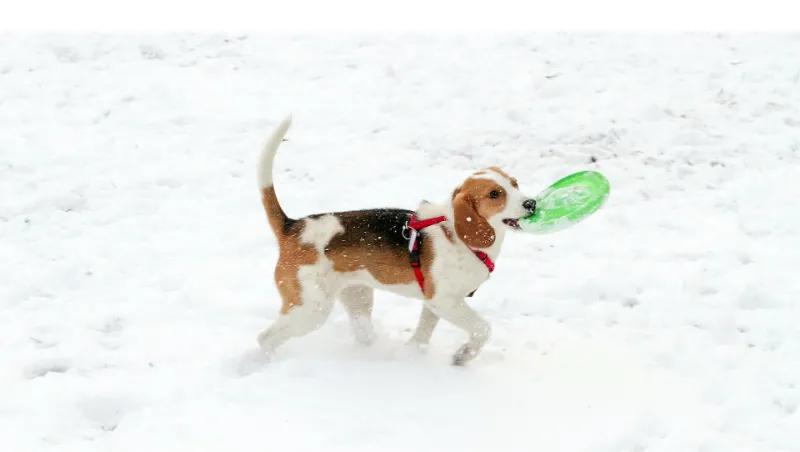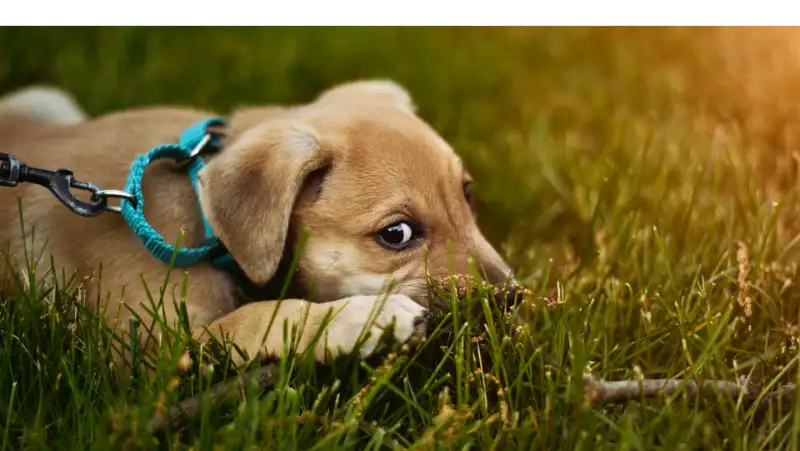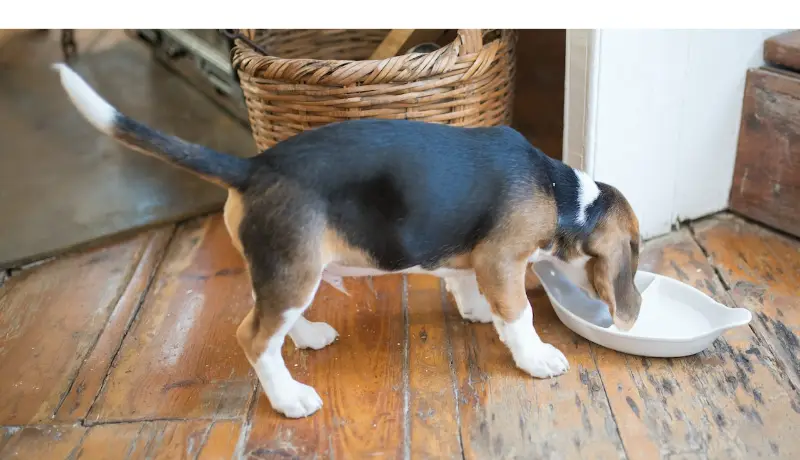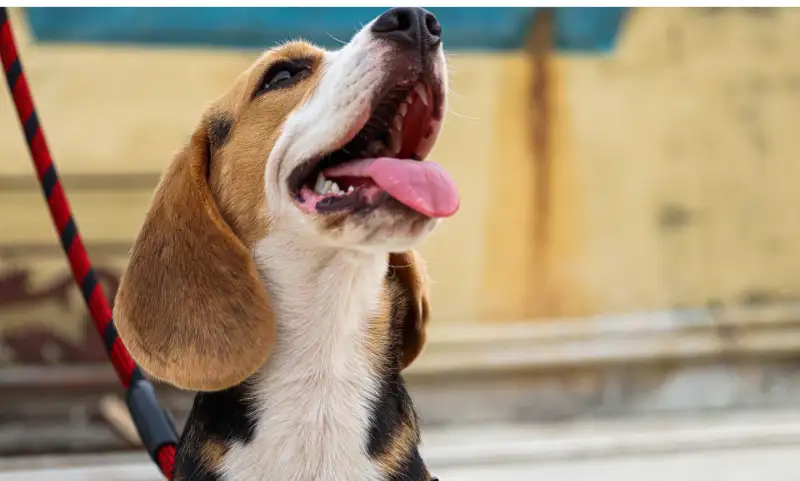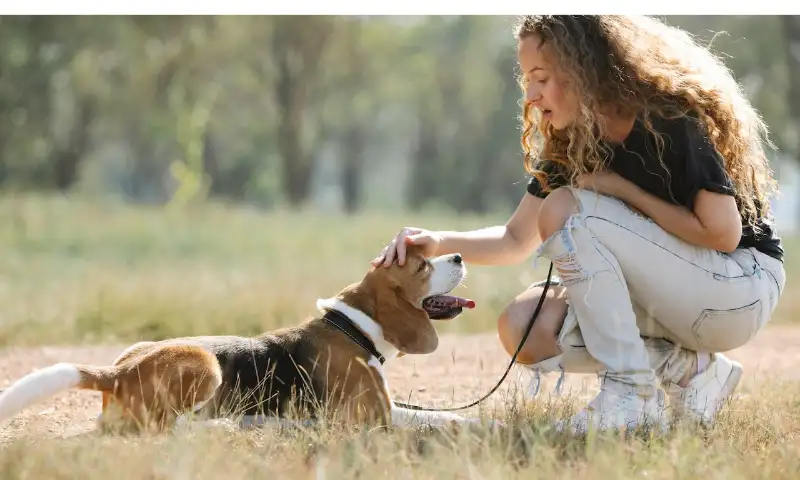As our lovable beagles grow older, it’s natural to notice some changes in their appearance, such as their coat color.
You might be wondering, do beagles grey early? Or what age do beagles change color?
If you’re also curious about other aspects of your beagle’s life, like their behavior at different ages, check out our comprehensive guide on beagle behavior at every age.
When Do Beagles Start Turning Grey In Colour?
In this blog post, we’ll dive into the fascinating world of beagle coat colors and discuss when these pups start showing signs of aging, like graying fur.
Along the way, we’ll also explore how to care for your senior beagle and make its golden years as comfortable as possible. So, let’s begin our journey into understanding when beagles turn grey.
Understanding Beagles’ Coat Colors
Before we delve into the specifics of when beagles turn grey, it’s essential to understand their coat colors and variations.
Knowing the natural colors and patterns of beagles will help you identify any changes in their fur as they age.
The Classic Beagle Tri-Color
Beagles’ most common coat color is the classic tri-color pattern, consisting of black, brown, and white. This distinctive pattern is what many people associate with beagles, and it’s easy to see why—it’s absolutely adorable!
Tri-color beagles usually have a white base coat, with black and brown patches distributed across their body.
Other Beagle Coat Variations
While the tri-color pattern is the most well-known, beagles come in various other coat colors and patterns, including:
- Red and white
- Blue tick
- Lemon and white
- Chocolate
Each of these variations adds to the uniqueness of the beagle breed, and some beagle owners may notice that their pups’ coats change color as they grow.
For example, some beagles’ black patches might fade into a lighter shade of brown over time. To learn more about how your beagle’s size and appearance change as they grow, visit our post on when beagle puppies stop growing.
When Do Beagles Turn Grey?
Now that we better understand beagles’ coat colors, let’s address the burning question: When do beagles turn grey?
Graying is a natural part of aging for many dog breeds, including beagles.
The Natural Graying Process
Generally, beagles begin to show grey hairs around their muzzle, eyebrows, and ears as they age. This graying process typically starts when a beagle reaches middle age, around 5-7 years old. However, the exact age at which a beagle starts turning grey can vary depending on factors like genetics, overall health, and environmental conditions.
Factors Affecting Graying in Beagles
Here are some factors that can influence what age beagles go gray:
- Genetics: Some beagles may be predisposed to turn grey earlier than others due to their genetic makeup. If a beagle’s parents turned grey early, there’s a higher likelihood that their offspring will too.
- Health: Beagles with underlying health issues may show signs of graying earlier than their healthier counterparts. Regular veterinary visits are essential to keep your beagle’s health in check.
- Stress: Just like humans, dogs can experience stress-induced graying. High-stress environments or situations may cause your beagle to turn grey prematurely.
It’s important to note that some beagles might show signs of graying early, while others might never develop a significant amount of grey hair.
To get a better idea of what age dogs start showing grey, take a look at our post about how smart are beagles, which includes information on their lifespan and aging process.
Caring for Your Senior Beagle
As your beagle enters their golden years, providing them with the care and attention they need to age gracefully is crucial.
Here are some tips on how to look after your aging beagle and ensure they enjoy a comfortable, happy life:
Dietary Considerations
Senior beagles may have different nutritional requirements than their younger counterparts. It’s essential to adjust their diet accordingly, providing them with a portion of high-quality, age-appropriate dog food that meets their changing needs.
Consult your veterinarian for specific dietary recommendations and portion control guidelines.
Exercise and Mental Stimulation
While older beagles may not have the same energy levels as when they were young, they still require regular exercise and mental stimulation to maintain their health and happiness.
Keep your beagle engaged with gentle walks, playtime, and puzzle toys that challenge their minds. Remember to tailor the activities to your beagle’s physical abilities and energy levels.
Regular Veterinary Checkups
Routine veterinary checkups become increasingly important as your beagle ages. Regular visits to the vet can help detect and address any health issues early on, making it easier to manage your beagle’s overall well-being.
Be sure to discuss any concerns or questions you may have about your beagle’s health with your veterinarian.
Embracing Your Beagle’s Golden Years
As your beagle begins to show signs of aging, like graying fur, embracing and cherishing its golden years is essential. This period of their life can be filled with love, happiness, and special memories for both you and your beagle.
Here are a few ways to make the most of your time together:
- Create new routines: Adapt your daily routines to accommodate your beagle’s changing needs. This may include adjusting walk times, introducing new games, or finding new ways to snuggle together.
- Capture the memories: Document your beagle’s life through photographs, videos, or even a dedicated social media account. These memories will be priceless as time goes on.
- Be patient and understanding: Your beagle may not be as quick or energetic as they once were, but they still need your love and support. Show them patience and understanding as they navigate their senior years.
- Celebrate their milestones: Throw a birthday party or celebrate other milestones, like their “gotcha day,” to honor the time you’ve spent together and the bond you share.
By embracing your beagle’s golden years and providing them with the love and care they need, you can ensure they enjoy a happy, fulfilling life at every stage.
Conclusion: Cherishing the Time with Your Aging Beagle
In conclusion, like other dog breeds, beagles will eventually show signs of aging, such as turning grey.
This natural process typically begins when they reach middle age, around 5-7 years old, but can vary depending on factors like genetics, health, and stress levels.
As your beagle enters their golden years, adjusting its care routine to meet it’s changing needs, including dietary considerations, exercise, mental stimulation, and regular veterinary checkups, is essential.
Embrace and cherish your beagle’s golden years by adapting to their needs, capturing memories, being patient, and celebrating milestones.
By providing them with the love and support they need, you can ensure they enjoy a happy, fulfilling life, regardless of their age or coat color.


